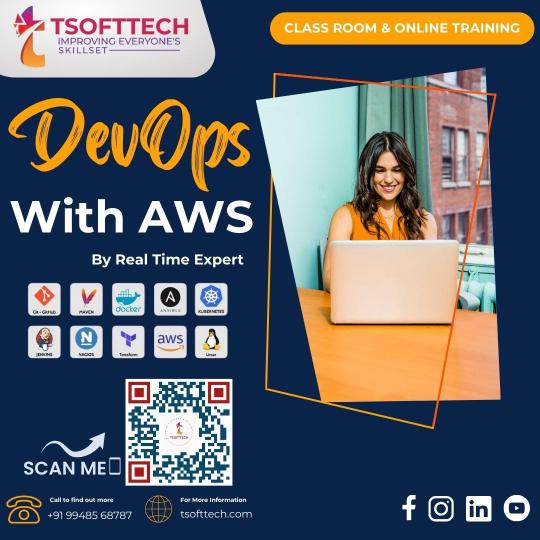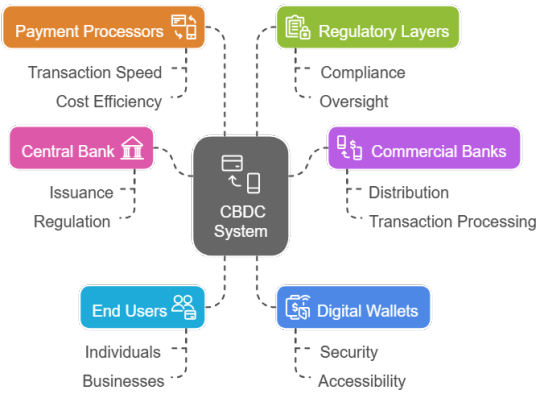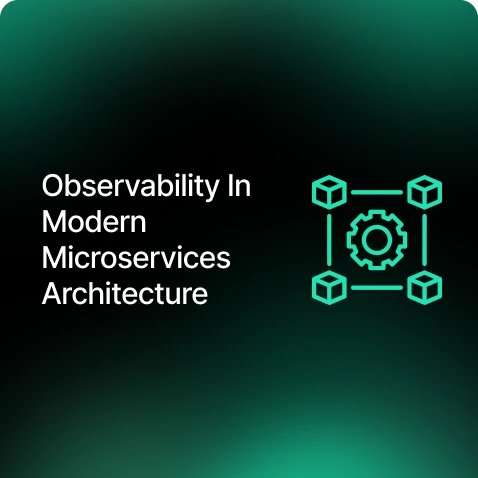#devops and cloud computing
Explore tagged Tumblr posts
Text
How DevOps and Cloud Computing Are Essential Today
In the rapidly evolving digital landscape, businesses must adapt to remain competitive. DevOps and cloud computing have emerged as essential technologies, enabling organizations to accelerate development, improve efficiency, and scale operations seamlessly.
The Role of DevOps in Modern IT
DevOps is a methodology that bridges the gap between development and operations, fostering collaboration, automation, and continuous improvement. By integrating CI/CD pipelines, automated testing, and infrastructure as code, DevOps helps businesses release software faster, reduce downtime, and enhance overall system reliability.
Why Cloud Computing Matters
Cloud computing eliminates the need for traditional on-premise infrastructure, offering scalable, on-demand resources that enhance flexibility and cost-efficiency. Whether it's SaaS, PaaS, or IaaS, cloud solutions empower businesses to innovate quickly, enhance security, and ensure data availability across the globe.
The Synergy of DevOps and Cloud Computing
When combined, DevOps and cloud computing create a powerful ecosystem that enhances agility, resilience, and efficiency. Cloud platforms provide the necessary resources for DevOps practices, enabling automated deployments, containerization, and seamless monitoring. This combination is crucial for organizations looking to streamline operations and stay ahead in the competitive market.
For expert DevOps and cloud computing solutions, CloudAstra offers top-tier services to help businesses transition smoothly, optimize cloud environments, and achieve operational excellence.
#devops and cloud computing#cloud computing devops#devops managed services.#devops#cloudcomputing#Cloud computing services
1 note
·
View note
Text
The combination of tools, procedures, and mindsets from previously divided roles—such as development, IT operations, engineering, and security roles—is known as DevOps. This approach aims to enhance workplace cooperation, expedite software delivery, assist companies in entering new markets sooner (thereby gaining a competitive edge), and offer better value to clients.
0 notes
Text
64 vCPU/256 GB ram/2 TB SSD EC2 instance with #FreeBSD or Debian Linux as OS 🔥

38 notes
·
View notes
Text
Best DevOps Engineering Training and Cloud Computing Certification for Career Growth
Take your career to new heights with top-tier DevOps training programs and the best cloud computing certification. Our DevOps training provider offers over 100 hands-on projects and real-world scenarios, giving you an immersive learning experience in the DevOps cycle. Perfect for those aiming to become DevOps engineers or seeking to expand their expertise in Cloud computing, our courses are designed to equip you with the skills and knowledge needed to succeed. Whether you want to dive into DevOps tools or learn industry-standard processes, our training programs prepare you for success.
2 notes
·
View notes
Text
Secure and Scalable Cloud Server Management at Atcuality
For businesses seeking to enhance scalability and maintain top-tier security, Atcuality provides unparalleled cloud server management services. Our solutions cover all aspects of cloud server maintenance, including load balancing, patch management, data backups, and disaster recovery planning. Our experienced professionals work with cutting-edge tools to ensure that your servers are secure, efficient, and scalable to meet changing business needs. Whether you operate in e-commerce, finance, or technology, we tailor our services to align with your operational goals. With Atcuality as your trusted partner, you can focus on driving growth while we handle the technical complexities of cloud management.
#seo marketing#seo services#artificial intelligence#azure cloud services#seo agency#digital marketing#seo company#iot applications#ai powered application#amazon web services#ai applications#virtual reality#augmented reality agency#augmented human c4 621#augmented and virtual reality market#augmented intelligence#augmented reality#cloud security services#cloud computing#cloud services#cloud service provider#cloud server hosting#software#devops#information technology#cash collection application#task management#blockchain#web developing company#web development
2 notes
·
View notes
Text

🚀 Ready to Master DevOps? 🚀
The wait is over! Our New DevOps Online Training starts On Nov 9, 2024, at eMexo Technologies! 📅💻 Learn how to streamline development, automate processes, and take your IT skills to the next level! 🔧✨
💡 Don’t miss this chance to join the future of IT! Our hands-on training will equip you with the skills to thrive in a DevOps environment! 🏆
👉 CLICK THE LINK https://www.emexotechnologies.com/courses/devops-certification-training-course/
🎯 Why Choose Us?
Expert Instructors with Industry Experience
Flexible Learning Schedules
Real-time Support & Guidance
Placement Assistance
Hurry, limited seats are available! 🎟️
Call / Whatsapp us:
📞 +91 9513216462
#devops tools#devops#cloud computing training#ittraining#techeducation#emexotechnologies#bangalore#electroniccity#traininginstitute#education#learning#course#training#careers#tech skills
2 notes
·
View notes
Text

Tsofttech is a One of the best quality training center for online, Classroom and Corporate trainings In Hyderabad . We are providing DEVOPS Online Training through world wide. Tsofttech is excellent DEVOPS Training center in Hyderabad. After course we will give support for certification, Resume preparation and how to prepare for interviews.
For More: https://tsofttech.com/devops-online-training
Attend Free Demo On DevOps With AWS Sign Up Now: https://bit.ly/3rp0W84 To Boost Your IT Career to Next Level by Expert Faculty's. Register now to reserve your spot.
3 notes
·
View notes
Text
CBDC technology partner India

As CBDCs become a global reality, Prodevans equips banks with everything needed to enter the digital currency ecosystem. We provide full-spectrum CBDC implementation — including compliant architecture, token management, real-time reconciliation, secure wallet enablement, and 24/7 L1/L2 support. Trusted for our role in India’s national rollout, we help institutions go beyond pilots to scalable, production-ready platforms ensuring seamless end- user readiness. Our services ensure central bank compliance while delivering performance, observability, and rapid response to evolving regulatory needs. Whether you’re in the pilot phase or preparing for production rollout, Prodevans supports your CBDC journey at every step.
OUR ADDRESS
403, 4TH FLOOR, SAKET CALLIPOLIS, Rainbow Drive, Sarjapur Road, Varthurhobli East Taluk, Doddakannelli, Bengaluru Karnataka 560035
OUR CONTACTS
+91 97044 56015
#CBDC (Central Bank Digital Currency)#Cloud Computing & Cloud Services#Application Modernization#360° Monitoring (Server#Application#Database & Virtualization Monitoring)#Identity & Access Management (IAM)#Automation (incl. ML‑driven#Ansible#network/cloud automation)#DevOps Tools & Support#Infrastructure Management (IaaS/PaaS/SaaS#orchestration#orchestration tools)
0 notes
Text

Accelerate your cloud journey with CloudAstra’s DevOps services. Automate deployments, improve CI/CD pipelines, and ensure scalable, efficient cloud infrastructure.
0 notes
Text
The combination of tools, procedures, and mindsets from previously divided roles—such as development, IT operations, engineering, and security roles—is known as DevOps. This approach aims to enhance workplace cooperation, expedite software delivery, assist companies in entering new markets sooner (thereby gaining a competitive edge), and offer better value to clients.
1 note
·
View note
Text

Edge Computing for Web Developers: How to Speed Up Your Apps
In today’s digital race, milliseconds matter.
Whether you’re building a real-time dashboard, an e-commerce platform, or a SaaS product, users expect one thing — speed. But traditional cloud setups, while powerful, aren’t always fast enough when data has to travel halfway across the globe.
Enter: Edge Computing — a game-changing strategy that moves computing closer to users and supercharges web performance.
What Is Edge Computing (And Why Should You Care)?
Imagine you’re ordering pizza. Would you rather get it from a kitchen next door or one 500 miles away?
That’s the difference between centralized cloud and edge computing.
Edge computing is about processing data as close to the user as possible — often on local servers or network nodes instead of a distant data center. For web developers, this means fewer delays, faster responses, and smoother user experiences.
And in an age where a one-second delay can drop conversions by 7%, that’s a big deal.
How Does It Actually Work?
Here’s the simple version:
You deploy some parts of your app (like APIs, static files, and authentication logic) to a central server and across multiple edge locations worldwide.
When a user in New York accesses your app, it loads from a nearby edge server, not from a main server in Singapore.
Result? Lower latency, less server load, and faster load times.
What Can Web Developers Use Edge Computing For?
Edge computing isn’t just for heavy tech infrastructure — it’s now developer-friendly and API-driven. Here’s how you can use it:
1. Deliver Static Assets Faster
CDNs (Content Delivery Networks) like Cloudflare, Vercel, or Netlify already do this — they serve your HTML, CSS, JS, and images from edge locations.
Bonus Tip: Combine with image optimization at the edge to slash load times.
2. Run Serverless Functions at the Edge
Think dynamic actions like form submissions, authentication, or geolocation-based content. Platforms like Cloudflare Workers, Vercel Edge Functions, and AWS Lambda@Edge let you run logic closer to your users.
Example: Show region-specific content without needing the user to wait for a central server to decide.
3. Improve API Response Times
You can cache API responses or compute lightweight operations at the edge to reduce back-and-forth trips to the origin server.
Imagine: A travel app loading nearby attractions instantly by computing distance at the edge, not centrally.
4. Secure Your App Better
Edge networks can block threats before they ever reach your main server, including bots, DDoS attacks, and suspicious traffic.
It’s like having a security guard posted on every street corner, not just your front door.
But… Does Every App Need Edge Computing?
Not necessarily. If your app is local, low-traffic, or non-latency-sensitive, traditional cloud might be enough.
But if you’re scaling globally, working with real-time data, or want lightning-fast load speeds, edge computing is your secret weapon.
Real-World Impact: Numbers Don’t Lie
Vercel reported a 50% performance boost for apps deployed with edge functions.
Retailers using edge caching see a 20–30% decrease in bounce rates.
Streaming platforms improved video start times by up to 60% with edge delivery.
These aren’t just nice-to-haves — they’re competitive advantages.
Getting Started: Tools You Should Know
Here are a few platforms and tools that make edge computing accessible for developers:
Cloudflare Workers — Write JavaScript functions that run at the edge.
Vercel — Perfect for Next.js and frontend teams, with edge function support.
Netlify Edge Functions — Simplified edge logic built into your CI/CD.
AWS Lambda@Edge ��� Enterprise-grade, with tight AWS integration.
Pro tip: If you’re already using frameworks like Next.js, Nuxt, or SvelteKit, edge-ready deployments are often just one setting away.
Final Thoughts: Why This Matters to You
For developers: Edge computing lets you build faster, more responsive apps without reinventing your stack.
For business owners: It means happier users, lower customer loss, and more conversions.
In a world where speed = success, edge computing isn’t the future — it’s the edge you need today.
0 notes
Text
Haha

66 notes
·
View notes
Text
COSS India – Premier IT Training & Red Hat Certification Partner
COSS India is a leading IT training and certification institute in India, renowned for delivering world-class education in open-source technologies. As an authorized Red Hat Training Partner, COSS offers a wide range of certification programs including RHCSA, RHCE, DevOps, Kubernetes, Ansible, OpenShift, and more. With training centers across major cities like Hyderabad, Bangalore, and Chennai, COSS India focuses on hands-on, practical learning designed to meet real-world enterprise needs.
Whether you're a student, IT professional, or enterprise client, COSS provides flexible learning options including instructor-led classroom training, online sessions, and corporate programs. Backed by certified trainers and state-of-the-art lab infrastructure, the institute ensures in-depth knowledge transfer and industry readiness. Thousands of students and professionals have advanced their careers through COSS’s career-focused programs.
Join COSS India to build future-ready skills and earn globally recognized certifications that open doors to top IT jobs worldwide. Unlock your tech career potential with the best in Linux and cloud education.
#Red Hat Certified Training#Linux Courses in India#DevOps Instructor-Led Training#Cloud Computing Training
0 notes
Text

🚀 Join Us TODAY for an Exclusive Azure DevOps Demo! 🚀
💡 Ready to boost your DevOps skills? Learn about Azure DevOps in our hands-on online demo TODAY at eMexo Technologies! 🎓🔥 PLUS, we're offering an incredible 40% OFF for a limited time! 💥
📅 Don't Miss Out – The clock is ticking! ⏳ Gain real-world insights and start your journey to becoming a DevOps pro! 🛠️
👉 CLICK THE LINK https://www.emexotechnologies.com/courses/microsoft-azure-devops-training-course-az-400/ to secure your spot NOW! 💻✨
📅 25th Sept 2024 🧭 9 PM ( IST )
Format: Online Training
Contact Us For More Info:
📞 Phone: +91 9513216462
🌐 Website: https://www.emexotechnologies.com/
#azure devops#azure training#devops#cloud computing training#emexotechnologies#bangalore#electroniccity#traininginstitute#e learning#online courses#online training#tech education#tech skills#software training institute
2 notes
·
View notes
Text
Observability In Modern Microservices Architecture
Introduction
Observability in modern microservice architecture refers to the ability to gain insights into the system’s internal workings by collecting and analyzing data from various components. Observability in modern microservice architecture has become supreme in today’s dynamic software landscape. It extends beyond traditional monitoring, encompassing logging, tracing, and more to gain comprehensive insights into complex systems. As microservices, containers, and distributed systems gain popularity, so does the need for strong observability practices. However, with these advancements come challenges such as increased complexity, the distributed nature of microservices, and dynamic scalability. Gaining a comprehensive view of an entire application becomes challenging when it’s deployed across 400+ pods spanning 100 nodes distributed globally. In this blog, we offer some insights on these issues and some thoughts on the tools and best practices that can help make observability more manageable.

Observability Components
Monitoring
Monitoring is the continuous process of tracking and measuring various metrics and parameters within a system. This real-time observation helps detect anomalies, performance bottlenecks, and potential issues. Key metrics monitored include resource utilization, response times, error rates, and system health. Monitoring tools collect data from various sources such as infrastructure, application logs, and network traffic. By analyzing this data, teams can gain insights into the overall health and performance of the system.
Logging
Logging involves the systematic recording of events, errors, and activities within an application or system. Each log entry provides context and information about the state of the system at a specific point in time. Logging is essential for troubleshooting, debugging, and auditing system activities. Logs capture critical information such as user actions, system events, and errors, which are invaluable for diagnosing issues and understanding system behavior. Modern logging frameworks offer capabilities for log aggregation, filtering, and real-time monitoring, making it easier to manage and analyze log data at scale.
Tracing
Tracing involves tracking the flow of requests or transactions as they traverse through different components and services within a distributed system. It provides a detailed view of the journey of a request, helping identify latency, bottlenecks, and dependencies between microservices. Tracing tools capture timing information for each step of a request, allowing teams to visualize and analyze the performance of individual components and the overall system. Distributed tracing enables teams to correlate requests across multiple services and identify performance hotspots, enabling them to optimize system performance and enhance user experience.
APM
APM focuses on monitoring the performance and availability of applications. APM tools provide insights into various aspects of application performance, including response times, error rates, transaction traces, and dependencies. These tools help organizations identify performance bottlenecks, troubleshoot issues, and optimize application performance to ensure a seamless user experience.
Synthetic
Synthetic monitoring involves simulating user interactions with the application to monitor its performance and functionality. Synthetic tests replicate predefined user journeys or transactions, interacting with the application as a real user would. These tests run at regular intervals from different locations and environments, providing insights into application health and user experience. Synthetic monitoring helps in identifying issues before they affect real users, such as downtime, slow response times, or broken functionality. By proactively monitoring application performance from the user’s perspective, teams can ensure high availability and reliability.
Metrics Collection and Analysis
Metrics collection involves gathering data about various aspects of the system, such as CPU usage, memory consumption, network traffic, and application performance. This data is then analyzed to identify trends, anomalies, and performance patterns. Metrics play a crucial role in understanding system behavior, identifying performance bottlenecks, and optimizing resource utilization. Modern observability platforms offer capabilities for collecting, storing, and analyzing metrics in real time, providing actionable insights into system performance.
Alerting and Notification
Alerting and notification mechanisms notify teams about critical issues and events in the system. Alerts are triggered based on predefined thresholds or conditions, such as high error rates, low disk space, or system downtime. Notifications are sent via various channels, including email, SMS, and chat platforms, ensuring timely awareness of incidents. Alerting helps teams proactively address issues and minimize downtime, ensuring the reliability and availability of the system.
Benefits of Observability
Faster Issue Detection and Resolution
One of the key benefits of observability is its ability to identify bottlenecks early on. By offering a detailed view of individual services and the overall system dynamics, developers can quickly detect and diagnose issues like unexpected behaviors and performance bottlenecks, enabling prompt resolution.
Infrastructure Visibility
Infrastructure visibility involves actively monitoring the foundational components of a system, including the network, storage, and compute resources. This practice yields valuable insights into system performance and behavior, facilitating quicker diagnosis and resolution of issues. Rewrite in a professional way
Compliance And Auditing
Observability is super important for making sure businesses follow the rules and pass audits in their Kubernetes setups. It’s all about keeping careful records of what’s happening in the system, like keeping track of logs, traces, and metrics. These records help prove that the company is sticking to the rules set by the government and industry standards. Plus, they help spot any changes over time. During audits, these records are super handy for inspectors to check if everything’s running as it should be according to the company’s own rules and legal requirements. This careful way of keeping track doesn’t just show that things are going smoothly but also helps find ways to do things even better to keep following the rules.
Capacity Planning and Scaling
Observability is like a smart tool that helps businesses strike the perfect balance between having enough resources to handle their workload and not overspending on unused capacity. By adjusting the amount of resources they use based on real-time needs, they can save money while still delivering top-notch service. Plus, observability lets them peek into the past to see how many resources they’ve needed before, helping them plan for the future and avoid any surprises. It also shows them which parts of their systems are busiest and which ones aren’t as active, so they can manage their resources more effectively, saving cash and ensuring everything runs smoothly.
Improved System Performance
Additionally, observability contributes to performance optimization. It provides valuable insights into system-level and service-level performance, allowing developers to fine-tune the architecture and optimize resource allocation. This optimization incrementally enhances system efficiency.
Enhanced User Experience
Observability in a system, particularly within a microservices architecture, significantly contributes to an enhanced user experience. The ability to monitor, trace, and analyze the system’s behavior in real time provides several benefits that directly impact the overall user experience. This proactive identification of problems enables teams to address issues before users are affected, minimizing disruptions and ensuring a smoother user experience.
Best Observability Tool Features to Consider
There are some key factors to be evaluated while selecting an Observability tool. Evaluating the right observability tool is very critical, as these tools play a crucial role in ensuring the stability and reliability of modern software systems.
Alerting Mechanisms
Check out for tools equipped with notification capabilities that promptly inform you when issues arise, enabling proactive management of potential problems. The tool should provide a search query feature that continuously monitors telemetry data and alerts when certain conditions are met. While some tools offer simple search queries or filters, others offer more complex setups with multiple conditions and varying thresholds.
Visualization
Observability requires quickly interpreting signals. Look out for a tool featuring intuitive and adaptable dashboards, charts, and visualizations. These functionalities empower teams to efficiently analyze data, detect trends, and address issues promptly. Prioritize tools with strong querying capabilities and compatibility with popular visualization frameworks.
Data Correlation
When troubleshooting, engineers often face the need to switch between different interfaces and contexts to manually retrieve data, which can lengthen incident investigations. This complexity intensifies when dealing with microservices, as engineers must correlate data from various components to pinpoint issues within intricate application requests. To overcome these challenges, data correlation is vital. A unified interface automatically correlating all pertinent telemetry data can greatly streamline troubleshooting, enabling engineers to identify and resolve issues more effectively.
Distributed Tracing
Distributed tracing is a method utilized to analyze and monitor applications, especially those constructed with a microservices framework. It aids in precisely locating failures and uncovering the underlying reasons for subpar performance. Choosing an Observability tool that accommodates distributed tracing is essential, as it provides a comprehensive view of request execution and reveals latency sources.
Data-Driven Cost Control
Efficient data optimization is essential for building a successful observability practice. Organizations need observability tools with built-in automated features like storage and data optimization to consistently manage data volumes and associated costs. This ensures that organizations only pay for the data they need to meet their specific observability requirements.
Key Observability Tools
Observability tools are essential components for gaining insights into the health, performance, and behavior of complex systems. Here’s an overview of three popular observability tools: Elastic Stack, Prometheus & Grafana, and New Relic.Observability ToolCategoryDeployment ModelsPricingElastic Stack
The choice of an observability tool depends on specific use cases, system architecture, and organizational preferences. Each of these tools offers unique features and strengths, allowing organizations to customize their observability strategy to meet their specific needs.
Conclusion
Observability in modern microservice architecture is indispensable for adopting the complexities of distributed systems. By utilizing key components such as monitoring, logging, and tracing, organizations can gain valuable insights into system behavior. These insights not only facilitate faster issue detection and resolution but also contribute to improved system performance and enhanced user experience. With a pool of observability tools available, organizations can customize their approach to meet specific needs, ensuring the smooth operation of their microservices architecture. Source Url: https://squareops.com/blog/observability-in-modern-microservices-architecture/
0 notes